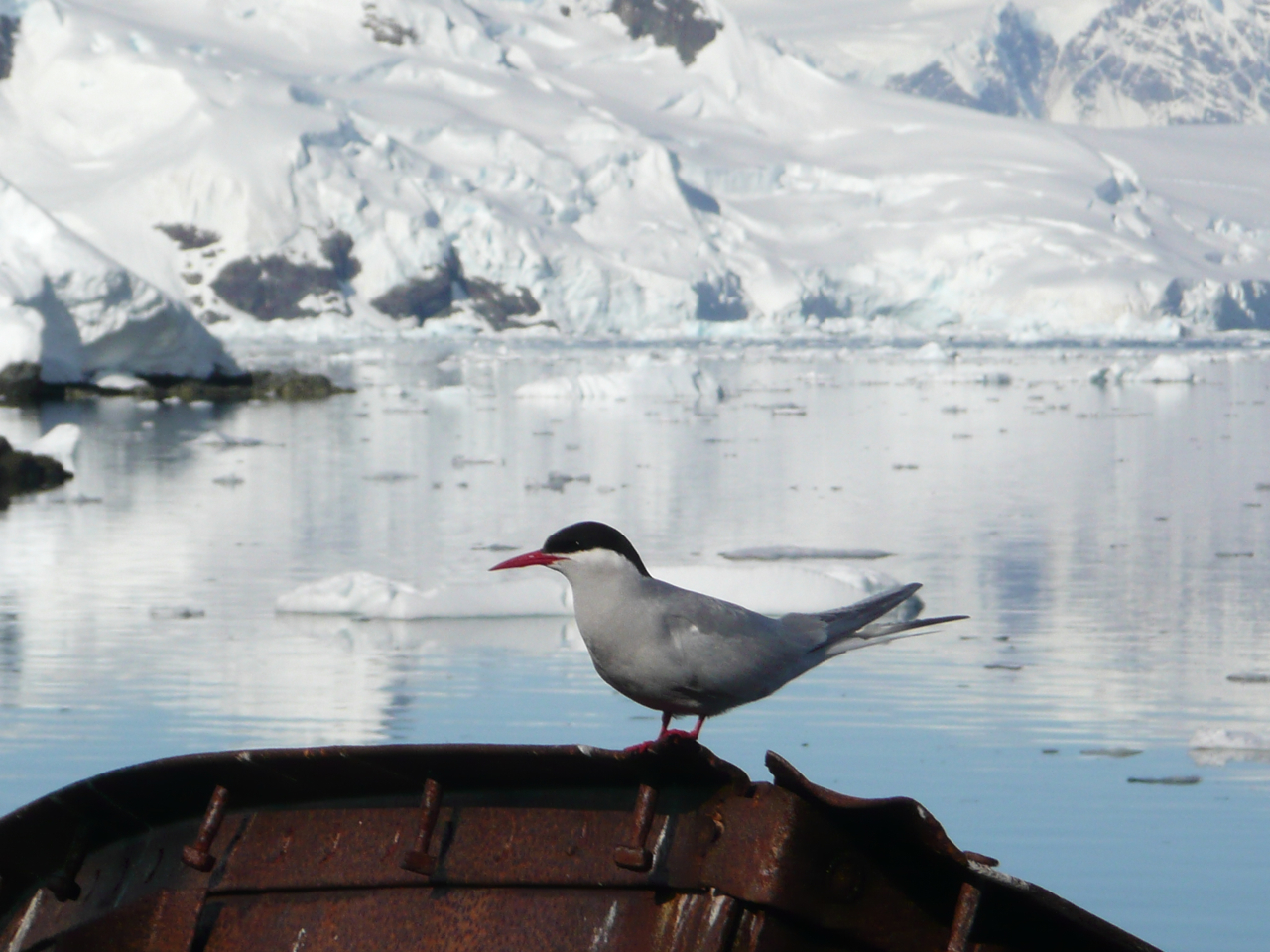Antarctic tern
The Antarctic tern (Sterna vittata) is a typical tern. It ranges throughout the southern ocean and the continent of Antarctica. It is very similar in appearance to the closely related Arctic tern, but is stockier, and the wing tips are grey instead of blackish in flight. It is in breeding plumage in the southern summer, when the Arctic tern has moulted to its non-breeding plumage (though this is not useful for separating it from another species, the South American tern).
Breeding takes place from mid-November to early December. Chicks hatch from December to February. Skuas and jaegers are the primary predators of the bird's eggs and young.
The total global population of this bird is around 140,000 individuals.
Subspecies
There are six listed subspecies of the Antarctic tern:
- S. v. tristanensis (Murphy, 1938) – Tristan da Cunha & Gough Island.
- S. v. sanctipauli (Gould, 1865) – St. Paul & Amsterdam Islands.
- S. v. georgiae (Reichenow, 1904) – South Georgia, South Orkney & South Sandwich Islands.
- S. v. gaini (Murphy, 1938) – South Shetland Islands, Antarctic Peninsula & nearby islands.
- S. v. vittata (Gmelin, 1789) – Prince Edward, Crozet, Kerguelen, Bouvet & Heard Islands.
- S. v. bethunei (Buller, 1896) – Stewart, Snares, Auckland, Bounty, Antipodes, Campbell & Macquarie Islands.
Of these six, S. v. gaini is commonly found on Peter I Island.
Description
The Antarctic tern is a small bird at 31–38 cm (12-15 inches) long. Its bill is usually a dark red or blackish. It is mainly pale grey and white, but has a black cap when breeding. In non-breeding plumage it has a grizzled crown and white forehead. The tips of this tern's wings are grayish black.
The plumage of juveniles is white on the belly, foreneck, forehead, and breast. The back is grey and the bill is black. Immature birds have plumage similar to adult terns.
